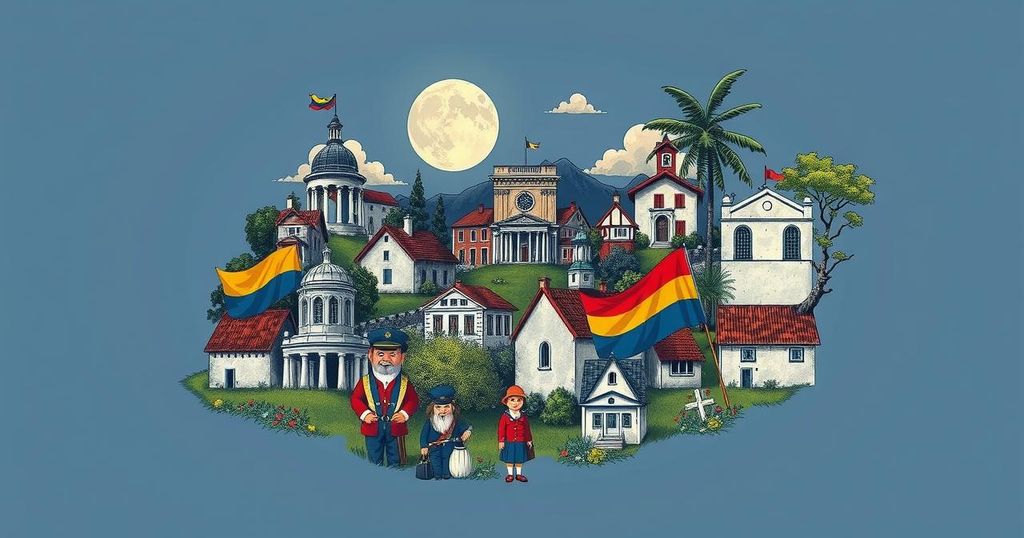The Path to Colombian Independence: From Gran Colombia to National Turmoil

Colombia’s quest for independence, sparked by the French invasion of Spain in 1808, led to a series of uprisings culminating in the declaration of independence in 1811. Following significant military successes under Simón Bolívar, Gran Colombia was established, though enduring regional disputes and leadership challenges ultimately caused its fragmentation. The political landscape remained tumultuous, characterized by rivalry and civil conflict, fundamentally influencing Colombia’s early development.
The revolution in Colombia was catalyzed by the French invasion of Spain in 1808, prompting a surge of loyalty towards the Spanish crown and significant anxiety regarding the future of the empire. Following the uprising in Bogotá on July 20, 1810, which is commemorated as Independence Day, New Granada experienced a tumultuous struggle for independence culminating in a series of civil wars. The initial attempts at federation collided with the interests of Creole leaders desiring centralized governance.
As Spanish reconquest efforts resumed, Colombian revolutionary forces reorganized under General Francisco de Paula Santander, a prominent political figure until his death in 1840. The shift towards independence gained momentum with the joining of Colombian and Venezuelan forces under Simón Bolívar, who achieved critical victories, including the decisive Battle of Boyacá in 1819. This success was part of the broader campaign leading to the establishment of Gran Colombia, which encompassed present-day Colombia, Panama, Venezuela, and Ecuador.
Bolívar’s leadership and the Congress of Angostura laid the groundwork for a republic formed in 1819, although it faced persistent issues, including regional rivalries and leadership disputes. By 1830, Bolívar’s departure marked the disintegration of the republic as Venezuela and Ecuador seceded. Such political instability persisted, despite the presidency of Santander from 1832 to 1837, leading to civil strife and ultimately affecting the nation’s economic development.
Colombia’s path to independence was marked by significant upheaval, particularly after Spain was weakened by foreign invasions. The ensuing internal conflicts and leadership struggles reflected the complex dynamics of post-colonial governance. The desire for both independence and unity faced formidable challenges as aspirants to power contested the direction of the newly established states. The political scene became increasingly polarized, setting the stage for enduring rivalries between liberals and conservatives that would define Colombian politics in subsequent decades.
In conclusion, the struggle for Colombian independence was characterized by persistent conflict among local leaders, external military interventions, and the eventual fragmentation of Gran Colombia. While the nation experienced periods of prosperity under leadership figures like Santander, ongoing political rivalries led to instability and warfare, which would profoundly shape the country’s trajectory through the 19th century. These historical developments laid the foundation for Colombia’s political landscape in the years to follow.
Original Source: www.britannica.com







